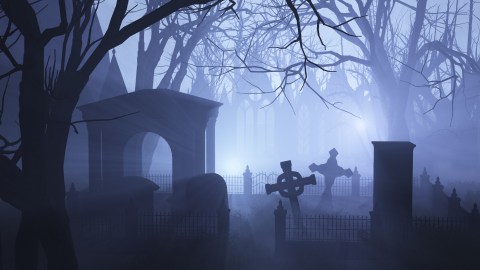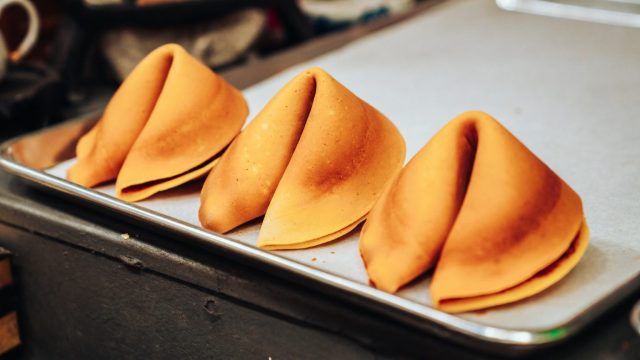5 ancient rituals designed to prevent zombies — and one to create them

- Fear of the undead is a worldwide phenomenon going back to ancient times.
- Many cultures had elaborate rituals for preventing the dearly departed from becoming the unwelcome undead.
- One culture, though, was more interested in creating zombies than preventing them.
The fear of reanimated corpses terrorizing the living seems embedded in the global imagination. Indeed, ancient societies created burial rituals in order to prevent the dearly departed from becoming the unwelcome undead.
While more recent burial rituals — from mock burials forcing South Koreans to face existential fears to letting human ashes become nutrition for trees — hint at our evolving relationship with death, everyone seems to love a good zombie tale. Given that the oldest known burial site appears to have had ritual significance, humans have contemplated death (and what comes after it) for a very long time.
Nailed down in Turkey
Ancient Romans often used nails at burial sites. As the authors of a recent study write, nails usually had a utilitarian purpose, such as securing a coffin. Usually.
The researchers believe that unique bent nails discovered at a Turkish cremation pit represent a “magical barrier” that pinned down corpses and prevented them from rising back up. True, these nails could have been spread around as amulets to protect the dead, but given that they were likely placed on a still-smoldering pyre (accounting for their discoloration) and covered with a layer of solidified lime (serving as its own protective barrier), the Belgian research team is calling it zombie suppression. They write:
“The combination of nails and bricks designed to restrain the dead with the sealing effect of the lime strongly implies a fear of the restless dead. Regardless of whether the cause of death was traumatic, mysterious or potentially the result of a contagious illness or punishment, it appears to have left the dead intent on retaliation and the living fearful of the deceased’s return.”
Greek revenants
There’s a clear line between metaphysics and biology in modern societies that was not apparent in ancient Greece. That the dead walked among the living was common knowledge and pervades plenty of the surviving literature. These living dead were known as revenants. The Greeks went to great lengths to really kill them.
The pathways to an undead future were myriad. Unpopular or odd people were destined to become a revenant. Being born on an inauspicious day did not bode well for you. And if you happened to be the seventh child, forget about it — you were destined for the undead. Even if you escaped the many traps in life, if an insect touched your deceased body, revenant you’d become.
Remains discovered in a Greek colony in southeastern Sicily offer insight into how they stopped reanimated corpses: by placing large millstones over the heads and arms of the deceased, they prevented them from clawing their way back up to ground level. There’s also evidence they partook in the common European practice of burying the dead upside down, known as “prone burials.” If the corpse starts digging, the only way to go is down.
Jaw dropping in Ireland
Revenants didn’t only roam the Greek Empire’s Sicilian outpost. They made their way all the way to Ireland, where two skeletons buried in the eighth century were unearthed with large stones stuck in their mouths. One even seems to have dislocated the corpse’s jaw. Instead of pinning down skeletal chests or arms, the Irish believed a well-placed stone in the mouth would have prevented wicked spirits from escaping from their favorite orifice.
As archaeologist Chris Read, head of Applied Archaeology at the Institute of Technology in Sligo, Ireland, says, the mouth “was viewed as the main portal for the soul to leave the body upon death. Sometimes, the soul could come back to the body and re-animate it or else an evil spirit could enter the body through the mouth and bring it back to life.”
English zombie apocalypse
Across the Irish Sea, the English were taking no chances with stones. A 2017 analysis of 137 bones found evidence of burning, decapitation, and dismemberment. While cannibalism was the initial assessment, the researchers eventually landed on the suppression of revenants.
The burial site sits in a now-deserted village in North Yorkshire, where multiple mutilations over two centuries appear to have been inflicted upon these corpses. Analysis of teeth revealed that these were locals, dispelling the notion that they were foreigners encroaching upon their territory. Even more confoundingly, they were thrown in a communal pit over a number of generations, hinting at societal anticipation of a potential zombie apocalypse.
While the researchers admit this case is difficult to decode, they ultimately believe evidence points toward keeping the aspiring zombies stuck together in one pit for maximum confinement.
The Tower of Silence
Histories is considered the foundational text of Western history. Herodotus’ 5th-century masterpiece serves as the first citation of the Zoroastrian ritual known as dakhma, a “tower of silence.” The tower is a raised tomb in which a corpse is placed in order to avoid contact with the sacred elements of earth, fire, and water.
Exposed to air, predators crawled up and swooped down to feast on the corpse. That was the point: by picking the skeleton clean, scavengers reduced the possibility of the body being contaminated by a Nasu, or corpse demon. Once the body is satisfactorily cleansed of skin, muscles, and organs, the remains are dumped into a central pit to fully decompose. According to Zoroastrian doctrine, the graves and towers must eventually be destroyed to ensure nothing evil from the spirit world makes its way back to earth.
Today, modern-day Iranian Zoroastrians bury or cremate their dead. Parsi Zoroastrians in India continue to use the tower in sacred locations, while elsewhere bodies are left to be scavenged by vultures — a growing problem as the nation’s vulture population faces extinction.
Haitian reanimation
The previous rituals were created to keep zombies from terrorizing the living. What about burying someone in order to zombify them? Haitian vodou sorcerers, bokors, specialize in this process.
The bokor blends up a coup de poudre, or “powder strike,” composed of herbs and human and animal parts. They then inject or blow a dart into the victim, who rapidly enters a death-resembling state. The body is buried immediately after being pronounced deceased. The bokor then performs a rite and digs up the “corpse.” Another ritual ensues. The body is reanimated as a zombi cadavre (zombie of the flesh) while the bokor quickly traps the zombie’s spirit. The following day, the sorcerer administers concombre zombi (the “zombie’s cucumber”), a hallucinogenic mixture that renders the reanimated body speechless and memory-less. From there, the zombie becomes enslaved to the bokor to perform farm labor and construction work, remaining in bondage until the sorcerer dies.
Unlike the above rituals, we have modern evidence of this one. In the 1980s, Clairvius Narcisse returned to his village after being buried 18 years earlier. The seeming mythology was confirmed by his sister, Angelina. This compelled ethnobotanist Wade Davis to spend months in Haiti trying to figure out what could zombify a human.
Davis befriended a bokor and eventually obtained the shamanic mixture. The concoction contained tarantulas, lizards, sea worms, human bones, and dried fish — the last ingredient was full of tetrodotoxin, the same poison that makes fugu fish (a type of pufferfish) a dangerous delicacy in Japan. Just as a few brave Japanese die eating the fish every year, the inexact dosing method of bokors has been known to end a few Haitian lives.
Davis scoured the Japanese literature and found instances of adventurous diners being buried alive in the same manner as Narcisse. The right fugu dose renders someone only nearly dead, and the state can last for up to a week. And this means if you’re an outcast in Haitian society, you could end up a “zombie” working the fields.





